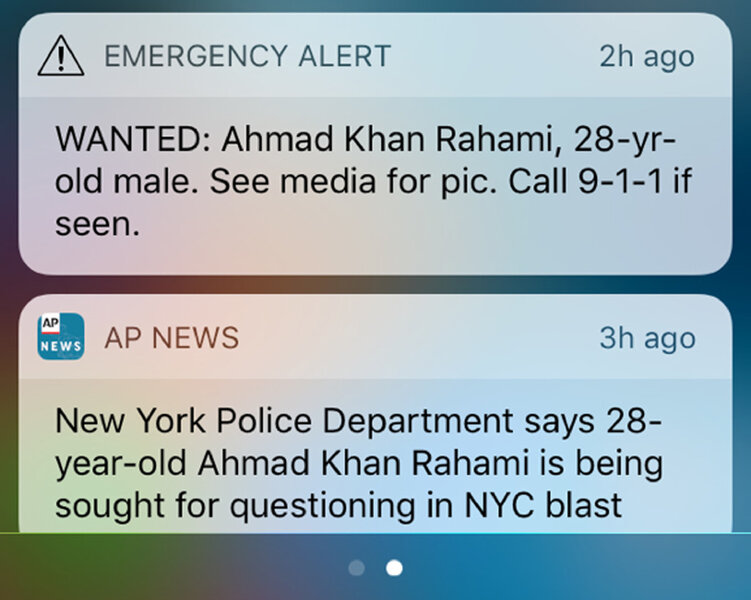How emergency phone alerts are going to become even more useful
Following criticism for its brief, text-only emergency alert messages, the Federal Communications Commission (FCC) adopted new rules for the country's Wireless Emergency Alert (WEA) system on Thursday.
The new rules will expand the capacity of emergency alerts to 360 characters (previously restricted to 90), allow embedded phone numbers and URLs, and support Spanish-language alerts. The changes come following criticism of the alerts last week in New York City, where an alert asked people to "see media for pic" of bombing suspect Ahmad Khan Rahami, described only as a "28-yr-old male." Critics argued that the description could lead to racial profiling.
"The FCC’s decision today is a win for public safety, it's a win for the country as far as emergency learning capability," Ben Krakauer, the director of Watch Command at NYC Emergency Management, the agency responsible for dispatching the city's alerts, told Wired. "The FCC approved a lot of what we've been asking them to."
With the ability to include links, photos are just one click away, although they still cannot be included in the message itself. Sending photos in the message is still not as simple as it is in text messages, because emergency alerts use a special network run by the Federal Emergency Management Agency.
More specific geographic targeting, which will enable the WEA to zoom in on specific neighborhoods rather than blasting alerts to entire Zip codes, will allow alerts to get to precisely the people who need them, without alarming others.
"We're always concerned about warning fatigue," Mr. Krakauer told Wired. "We don't want people to get messages that are not important to them and for them to opt out of the system."
The improvements, which will become available to phone carriers in a few months and will be required within a year, come at a time when the WEA alerts are being used more than ever. NPR reports that this year alone, nonfederal authorities have already sent more emergency messages than in the past three years combined.
Currently the FCC has three classes of alerts: imminent threats such as weather related emergencies, Amber alerts for abducted children, and presidential messages during national emergencies. This last category has never been used, and is the only one that phone users cannot opt out of in their settings.
Along with its other improvements, the FCC is adding a fourth category that will provide resources and safety instructions, such as the location of emergency shelters, or about water safety.
Already the FCC is considering future improvements that can be made to the system, including pictures within the message itself, more specific location-based alerts, and support for more languages.
"When technology gives us the opportunity to save lives, to increase public safety," FCC chairman Tom Wheeler told NPR, "shame on us if we don't seize on that opportunity."
Material from the Associated Press contributed to this report.







